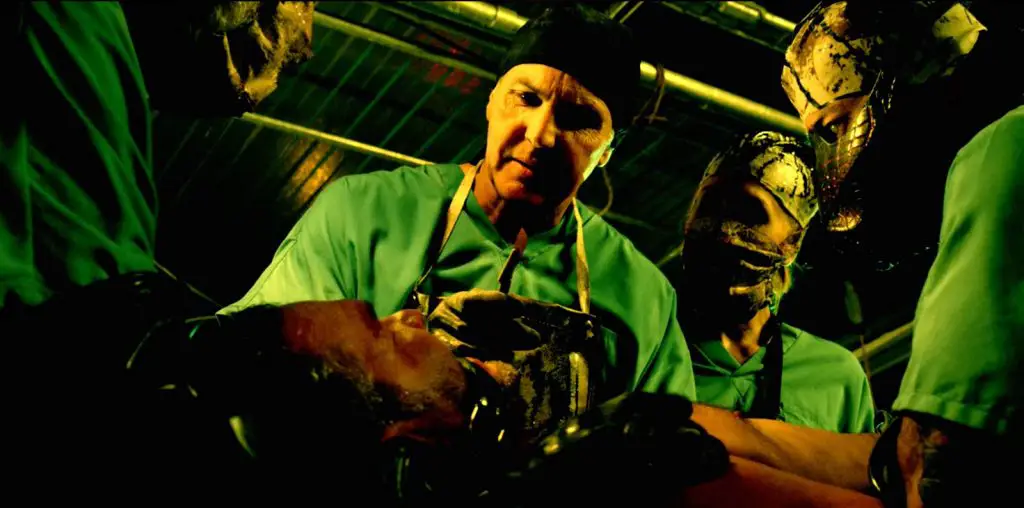
After the mood is set by a collage of found footage from old science and science fiction films, the camera, like some unmanned probe, begins to explore an abandoned futuristic station that appears to be in shambles. We are greeted by a female voice that seems to emanate from the shattered equipment. Margaret was once human, but when confronted with a terminal disease and the choice to live forever as a machine, she made the choice for life. In machine form (twisted tubes immersed in a bubbling, transparent vat), Margaret ran the self contained research station on Venus and acted as surrogate housewife to John George Clay, the only human inhabitant and the only other person living in the station. Margaret goes on to explain their tenuous relationship as colleagues, friends and unsatisfactory lovers, and finally relates the details of their ultimate fate.
The film is essentially the story of a doomed affair and as such, it shares many of the predictable circumstances found in other accounts of men and women growing apart. John and Margaret have different interests. Margaret is a romantic lover of poetry and John is practical and h***y. Each has a hard time understanding the other’s feelings and in the end, frustration turns to abuse.
The attractiveness of this film lies in the strangely effective art direction and design that Bowen and friends have contributed to the tale. The film combines found footage with new and blends them seamlessly. The sets are furnished with alien looking equipment and computer banks straight out of ’50s sci-fi, and the decor glows with earthbound sentimentality, from a poster of John Wayne on the wall to an old fashioned Victrola spinning old-fashioned music. At times the laboratory, lit with colorful neon accents, resembles a swing lounge dance floor. The black and white checkered floor that pervades the Venus station may be a nod to David Lynch and one scene where John experiments on an oozing space slug certainly is.
The only spoken performance is delivered by Maureen Browsey as the voice of Margaret. Browsey murmurs her lines in a measured and dry monotone and sometimes seems as if she is reading. This is almost appropriate given the similarity in theme to other films focusing on human boredom and featuring equally deadpan performances such as Lucas’ THX-1138, but the strong visuals, sound effects and musical selections that contribute so much to the story can cause one to unintentionally tune out the voice-over.
There is not much more to knock about this film. With a brief “vintage” look at an uncertain and unstable future, Bowen has successfully crafted a compelling metaphor of the troubled state of love and marriage for all times.
